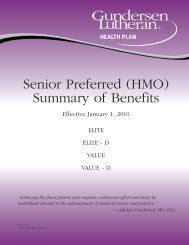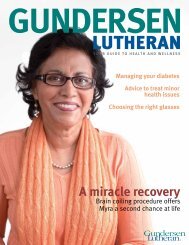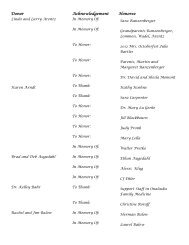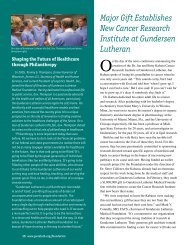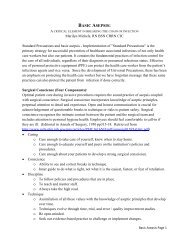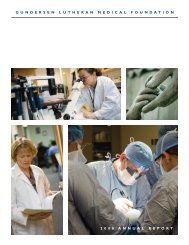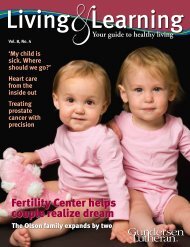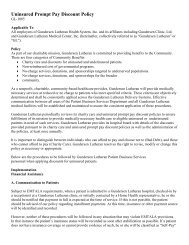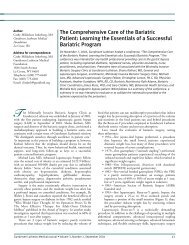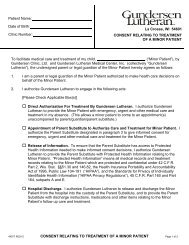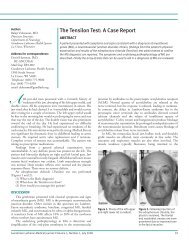Goals & Objectives Past and Present Issues of Infection Control ...
Goals & Objectives Past and Present Issues of Infection Control ...
Goals & Objectives Past and Present Issues of Infection Control ...
You also want an ePaper? Increase the reach of your titles
YUMPU automatically turns print PDFs into web optimized ePapers that Google loves.
Name: ______________________________Department/Institution:____________________________<br />
<strong>Infection</strong>s in the Elderly & Long Term Care<br />
Contact hours – 1.0<br />
<strong>Goals</strong> & <strong>Objectives</strong><br />
Goal<br />
To familiarize the learner to the infection control issues in the long term care setting <strong>and</strong> the<br />
uniqueness <strong>of</strong> the geriatric resident.<br />
<strong>Objectives</strong><br />
• Identify risks to geriatric residents in developing health care associated infections in a<br />
communal setting.<br />
• Identify infection measures used to prevent common health care associated infections in a<br />
long term care facility (LTCF).<br />
Test<br />
1. The two most common health care associated infection <strong>of</strong> geriatric residents in the long<br />
term care facility LTCF are:<br />
a. Surgical site infection <strong>and</strong> urinary tract infections.<br />
b. Gastroenteritis <strong>and</strong> urinary tract infections.<br />
c. Respiratory tract infections <strong>and</strong> urinary tract infections.<br />
d. None <strong>of</strong> the above.<br />
2. The recognition <strong>of</strong> infection in the geriatric population is<br />
a. Relatively easy because the nurse sees the patient every day.<br />
b. Difficult because diagnostic tests <strong>and</strong> equipment are not readily available <strong>and</strong><br />
arrangements must be made to transport the resident to the local hospital.<br />
c. Challenging because the geriatric resident tends to have comorbid conditions that<br />
complicate the presentation <strong>of</strong> an infectious disease.<br />
d. No different than other healthy adults.<br />
3. Prompt treatment with an antibiotic to a suspected infection<br />
a. May be life preserving.<br />
b. Is necessary due to the CMS requirements.<br />
c. May contribute to over use <strong>of</strong> antibiotics <strong>and</strong> subsequent resistant organisms.<br />
d. Is preferred to the ‘wait <strong>and</strong> see’ approach since the geriatric patient is so frail.<br />
4. An effective immunization program to prevent the spread <strong>of</strong> communicable disease in the<br />
long term care facility includes:<br />
a. Vaccinating the residents against influenza, pneumococcal <strong>and</strong> shingles.<br />
b. Vaccinating the staff in the LTCF against influenza at no charge.<br />
c. Having a st<strong>and</strong>ing order in place for amantadine.<br />
d. Placing the TB skin test before vaccinating against influenza.<br />
- 34 -




